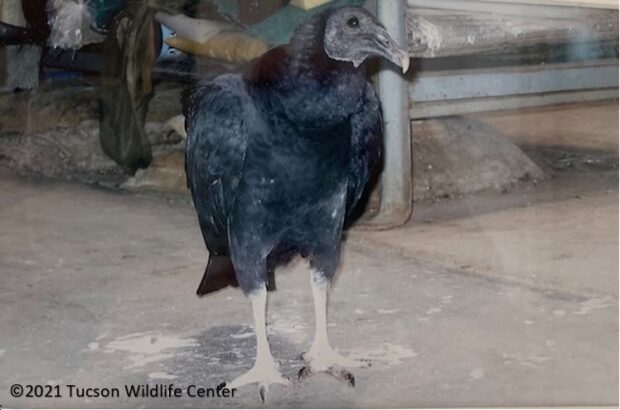
The arrival of a black vulture, a victim of lead toxicosis, brought back memories of a long-time resident and former educational vulture named Egor. For the volunteers and employees of Tucson Wildlife Center’s rescue and care givers team, Egor was a special ambassador. Rescued by the Center’s CEO and founder Lisa Bates, who scaled a two-story rooftop to capture the badly injured bird, Egor could not be released back into the wild but happily spent his life from 2004 until his passing in 2019 on the grounds of Center. He was a favorite of tour guides and visitors and is remembered and dearly loved by all.
Black vultures are the most numerous vulture species in the Western Hemisphere but their range in the US is limited more to southern states and occur only rarely in the Sonoran Desert region of Arizona. Gregarious in nature but lacking the large and prominent nostrils of the turkey vulture, these opportunists fly high above their red headed cousins descending on the carrion they smell to feed along with them.
Our current patient ingested lead which is highly toxic but is responding well to treatment. We look forward to returning him back to his family and nature and say, “thanks for the memories.

